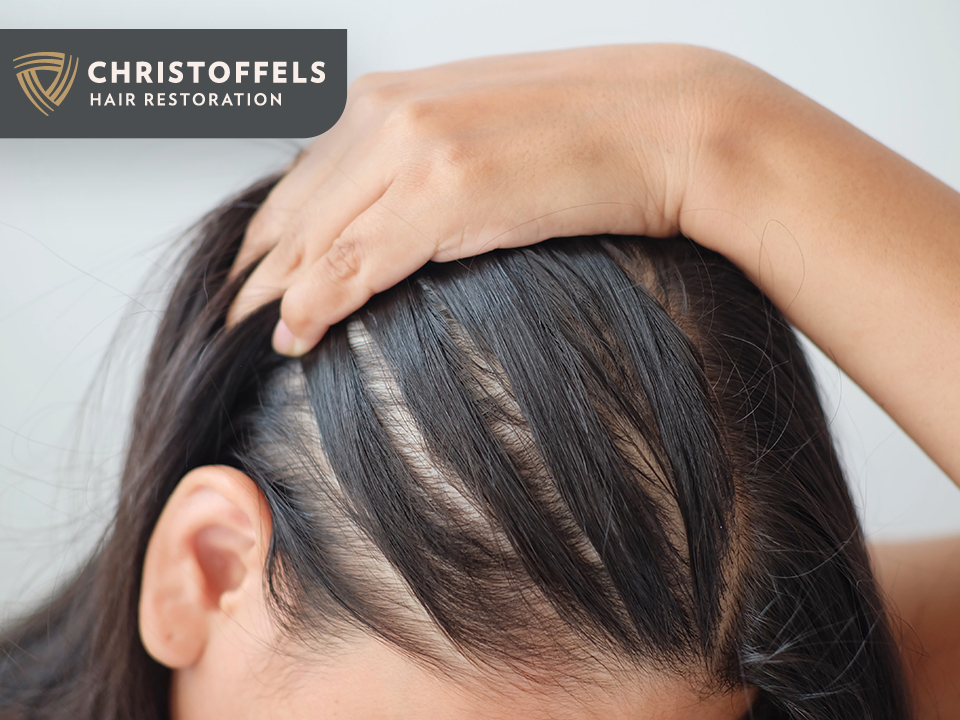Pulse of Information
Your source for the latest insights and updates.
A Hair-Raising Journey Through the World of Hair Loss
Discover shocking truths, expert tips, and heartfelt stories in our hair loss journey that'll change how you see your strands forever!
Understanding the Causes of Hair Loss: A Comprehensive Guide
Hair loss is a common concern that affects millions of people across the globe, and understanding the causes of hair loss is the first step in addressing the issue. Various factors contribute to this condition, including genetics, hormonal changes, medical conditions, and environmental influences. Common genetic conditions, such as androgenetic alopecia, often lead to patterns of baldness in both men and women. Hormonal fluctuations due to pregnancy, menopause, or thyroid issues can exacerbate hair thinning, making it crucial to identify any underlying health problems.
In addition to biological factors, cultural and lifestyle choices also play a significant role in hair health. Poor nutrition, lack of essential vitamins, and excessive styling can weaken hair follicles, leading to increased shedding. Additionally, stress and exposure to toxic substances may further accelerate hair loss. Understanding the causes of hair loss can empower individuals to make informed decisions regarding their hair care routines and seek appropriate treatments, whether through lifestyle changes, medical interventions, or natural remedies.

Exploring the Latest Treatments for Hair Loss: What Works?
As the quest for effective hair loss solutions continues, numerous treatments have emerged, promising to restore lost hair and boost confidence. Among the most prominent options are topical treatments such as minoxidil, which has been clinically proven to help with hair regrowth in both men and women. Additionally, platelet-rich plasma (PRP) therapy is gaining traction as an innovative approach that uses the body's own healing properties to stimulate hair follicles and encourage growth. These treatments, while showing promise, can yield varying results, making it essential for individuals to consult with dermatologists or trichologists to find the best fit for their specific type of hair loss.
In addition to traditional options, technology-driven solutions like low-level laser therapy (LLLT) and robotic hair transplant surgery are revolutionizing the field of hair loss treatments. LLLT utilizes specific wavelengths of light to stimulate cellular activity in hair follicles, promoting thicker and healthier hair without invasive procedures. Meanwhile, advancements in hair transplant techniques, particularly methods using minimally invasive robotics, contribute to more precise and natural-looking results. As the landscape of hair loss treatments expands, it's important for individuals to stay informed about the latest developments and choose solutions that align with their individual needs and lifestyle.
Myths and Facts About Hair Loss: What You Need to Know
Hair loss is surrounded by numerous myths that can often lead to confusion and misunderstanding. For instance, one common myth is that wearing hats can cause baldness. In reality, there is no scientific evidence to support this claim; hair loss is primarily determined by genetics and hormonal factors. Another popular misconception is that hair loss only affects men. While it is true that men are more visibly affected by hair loss, women can also experience significant thinning or balding due to various reasons, including hormonal changes, stress, and medical conditions.
On the other hand, there are several facts about hair loss that everyone should be aware of. One important fact is that hair shedding is a normal part of the hair growth cycle; it is estimated that the average person loses 50 to 100 hairs a day. Additionally, treatments like minoxidil and finasteride have been clinically proven to help slow hair loss and stimulate regrowth in some individuals. Understanding the difference between these myths and facts about hair loss can empower individuals to make informed decisions about their hair health and seek appropriate treatments when necessary.